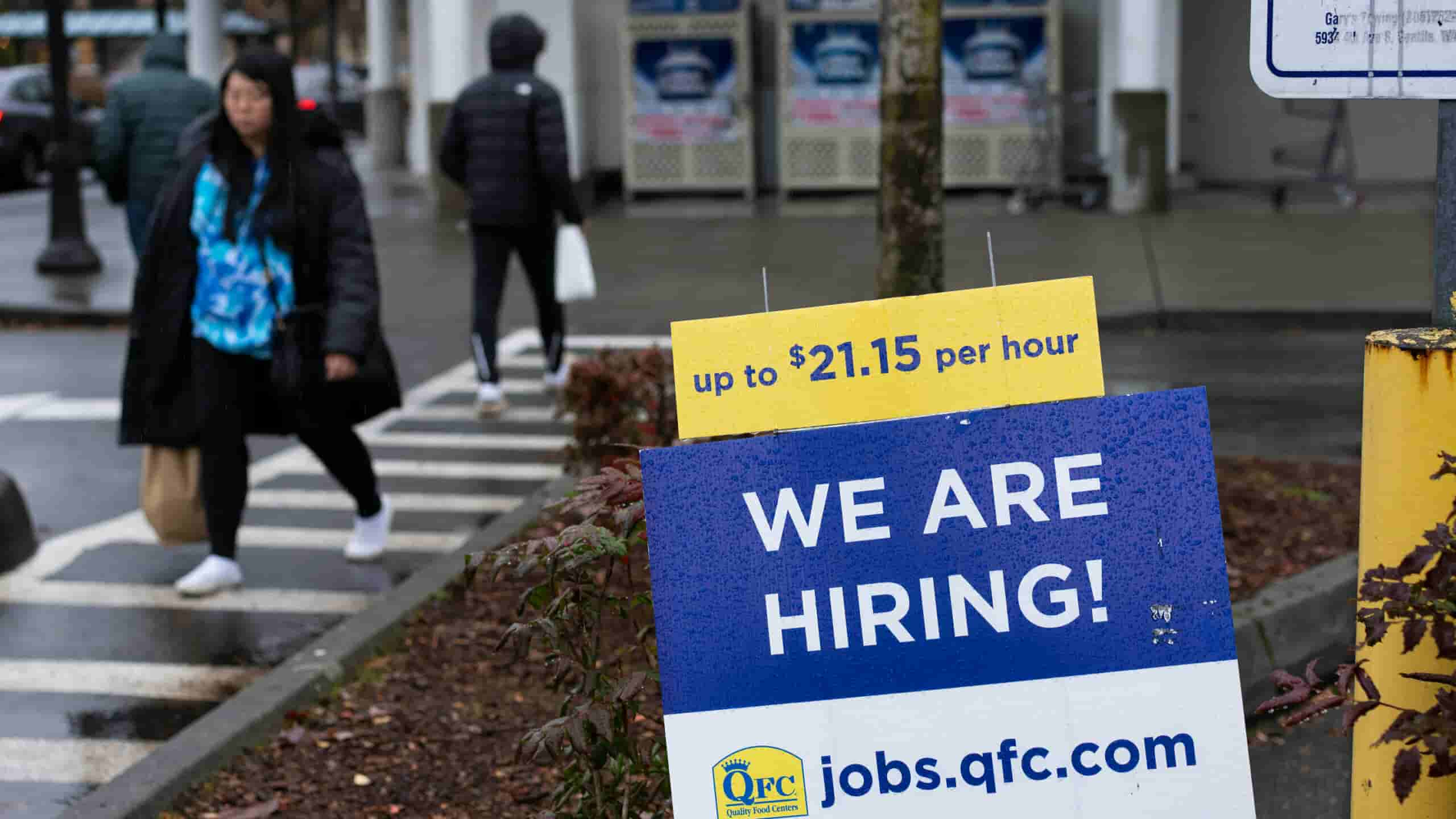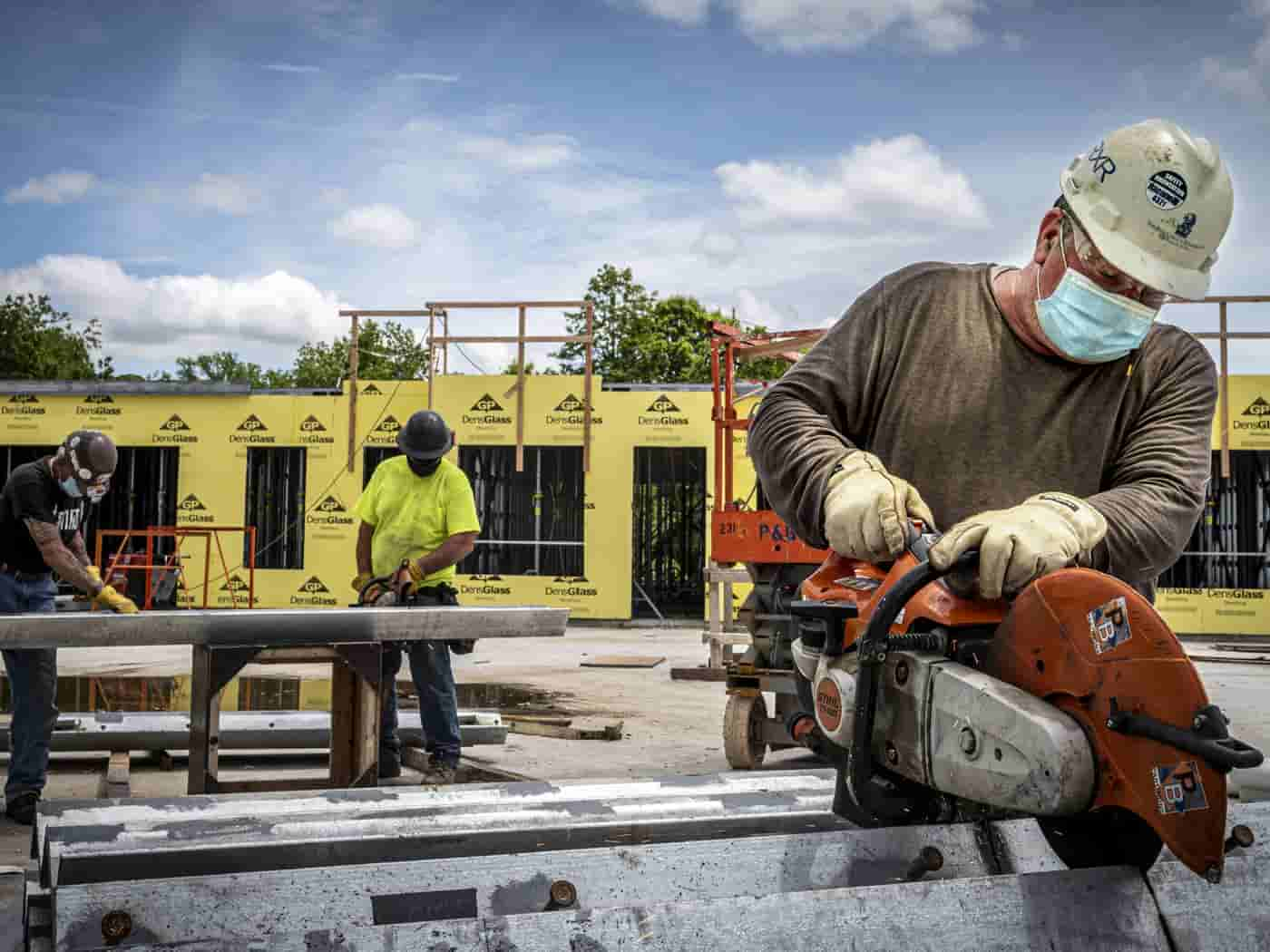Labor Shortage – The rate of hiring in the US in March most likely demonstrated a stable but moderating labor shortage, and the Federal Reserve authorities battling inflation may find some solace in the predicted decrease in wage increases. The longest streak in statistics collected by Bloomberg dating back to 1998 shows that employment growth has outperformed forecasts in the largest economy in the world for 11 straight months.

Prior to the holiday season, the labor market continued to be a significant source of strength for households and the economy as a whole, even if companies continued to struggle with finding qualified candidates. (Image courtesy of www.nytimes.com)
While there is a nearly 2-to-1 gap between the demand for and supply of labor, pay growth is continuing to slow. The average hourly wage grew 4.3% in March from a year earlier, the weakest annual growth since July 2021, according to the Good Friday jobs data.
What is Labor Shortage?
Many people have dubbed the pandemic’s significant impact on the American labor shortage or force as “The Great Resignation” More than 50 million people would leave their employment in 2022, many of them were looking for a better work-life balance and flexibility, higher pay, and a solid company culture.
However, a closer examination of what has happened to the labor force is best characterized as “The Great Reshuffle” because, since November 2020, hiring rates have exceeded quit rates. So, a lot of employees are leaving their positions, but a lot of them are being employed again elsewhere.
In order to gain a quick picture of the status of the labor market, the U.S. Chamber of Commerce is collecting information on job vacancies, labor force participation, quit rates, and more in our America Works Data Center.
Read Also: Americans Can Escape Dependency And Poverty By Increasing The SNAP Employment Requirements
Factors Contributing to the Labor Shortage
A growth in savings
Since early 2020, Americans have added $4 trillion to their savings accounts, thanks to increased unemployment compensation, stimulus checks, and restrictions on spending during the Lockdown. 68% of claimants were able to make more money on unemployment than they did when employed thanks to improved unemployment payments, which were only available until September 2021.
Premature retirement
By October 2021, more than 3 million adults have retired early due to the epidemic. Overall, from 48.1% in the third quarter of 2019 to 50.3% in the third quarter of 2021, more persons 55 and older were excluded from the labor market owing to retirement.
Unable to access to childcare
According to recent research by the US Chamber of Commerce Foundation and The Education Trust, the epidemic produced a vicious circle for the sector: in order for workers to return to the workforce, they require access to dependable childcare, but those providers are also struggling mightily. Many childcare providers were compelled to shut down or pull back as a result of the epidemic; between February and April 2020, the sector lost 370,600 employees, 95% of which were employed by women. Unfortunately, the recovery has been slow; as of September 2021, employment in the childcare sector was still 10% below pre-pandemic levels.
Hiring Rate vs Labor Shortage in the US
In February, there were 311,000 more people working on non-farm payrolls overall, while the unemployment rate increased slightly to 3.6 percent. Today’s news came from the Bureau of Labor Statistics. The retail industry, government, health care, leisure, and hospitality all had significant job growth. Information, transportation, and warehousing all saw a reduction in employment.
The employment rate in the US did not change from 60.20 percent in January 2023 to 60.20 percent in February 2023. according to US Bureau of Labor Statistics. Employers in the US continued to generate jobs in February, creating 311,000 more, while the unemployment rate remained at 3.6%, which is very close to a 50-year low. The figure was significantly lower than the revised 504,000 new positions that were added in January, as reported by the labor department, after months of sluggish job creation.
However, it was much greater than the 220,000 experts had anticipated, and it happened at a time when inflation has stayed persistently high. The Federal Reserve has made it clear that it will keep raising interest rates swiftly in an effort to slow the economy and lower prices.
Is there a Labor Shortage in the US?
The head of the Federal Reserve, Jerome Powell, claims that the “structural labor shortage” in the country is unlikely to be rectified anytime soon. According to the US Chamber of Commerce, firms in the US are unable to fill more than 10 million job opportunities.
There is no labor shortage, that much is certain. However, there aren’t enough occupations earning enough money to draw applicants to fill unfilled positions. Real (inflation-adjusted) earnings continue to decline for the majority of Americans. Prices have been rising faster than wages. The cost of food, electricity, rent, daycare, elder care, and transportation (cars, gas, and public transit) are just a few of the price hikes that affect working people the most.
The federal minimum wage is still declining in the meantime. The longest stretch without a raise in company history has been 13 years. Its real worth after inflation adjustment is at its lowest level in 66 years.
Read Also: US Labor Costs Increase As Job Markets, Interest Rates Shift

